Motorola DROID Ultra vs LG G2
This is a comparison review between the Motorola DROID Ultra and LG G2. We encourage you to also read our full in-depth review of the Motorola DROID Ultra, and the LG G2.
Introduction
With only a few months left in the year, all the chips are on the table, as phone manufacturers are battling it out for your purchasing dollars. In this comparison review, we’re going to take a look at the Motorola DROID Ultra and the LG G2, both of which are available from Verizon Wireless for $200 with a 2-year contract, or $600 full retail. Since we’re already reviewed both devices separately, we’re going to take a look at some of the differences between them; what we like and don’t like.
Design
As with most smartphones today, both the Motorola DROID Ultra and LG G2 look like two black slabs, though the DROID Ultra does also come in a red version for those looking to spice things up.
But each device has its own design characteristics. The DROID Ultra is the thinner of the two at only 0.28” and is more lightweight. We like that it is constructed out of Kevlar for added durability, while the LG G2 is using a plastic polymer. Even though the G2 is a bit thicker and heavier, this is because it packs a larger 3000mAh battery, over the 2130mAh battery on the DROID Ultra. One thing we don’t care for is the glossy finished used on the rear of the devices, as it shows fingerprints, smudges, and pretty much anything else.
For button placement, both phones couldn’t be more different. The DROID Ultra uses capacitive buttons under the front display for back, home and recent apps, and on the right edge are the physical power/lock key and volume rocker. Meanwhile, the LG G2 uses the standard Android on-screen softkeys, but has placed the remaining power and volume buttons on the rear of the device under the camera. Furthermore, the Verizon version of the G2 slightly modifies these buttons, making each one feel identical, and hard to distinguish from touch alone – while the G2 version from other carriers has more of a “hump” for the center power/lock key making it easier to find.
Display
Ok, here we go. The Motorola DROID Ultra comes with a 5” Super AMOLED display with a resolution of 720x1280, giving it a pixel-per-inch count of 294. Meanwhile, the LG G2 has a larger 5.2” IPS LCD display with a full HD resolution of 1080x1920, which gives it a higher pixel-per-inch count of 423. This not only translates into a slightly larger screen on the LG G2 by 0.2” but since it is higher resolution, text and images are crystal clear, sharp, and lack any jagged edges.
When using both phones next to each other, colors are highly saturated with more “pop” to them on the DROID Ultra and viewing angles are also excellent, which is normal for AMOLED displays. The LG G2 has more realistic colors, which we prefer, though the off-axis viewing angles aren’t that great. When using the phones outside in sunlight and turning their brightness up to maximum, the IPS LCD on the LG G2 is brighter and easier to view with its LED backlight, as the Super AMOLED display on the DROID Ultra as a bit darker and harder to view.
The DROID Ultra includes Motorola’s Active Display notification feature, which we also saw on the Moto X. Basically what it does is allows you to nudge the phone, and only the center of the display will turn on showing the date and time. Then if you get any notifications, such as a new message or a missed call, only that part of the display will turn on. This way, the device will conserve power since it does not have to turn on the entire display.
The LG G2 has something different called Knock On, that allows you to double-tap on the display to turn it back on, without having to pick up the phone and press the power/unlock key on the back. This is a useful feature, and you can also double-tap the screen anytime to turn it back off.
Motorola DROID Ultra 360-Degrees View
LG G2 360-Degrees View
Interface and Functionality
So many choices. Even though both devices are running Android 4.2.2 Jelly Bean, the interface looks and feels different, as the Motorola DROID Ultra is pretty close to stock Android as possible with a simplistic approach, 5 homes screens and a basic widget selection. Though there are some Motorola exclusives included, such as the Touchless Control, which is voice recognition with the Google Now experience, Motorola Assist, Droid Zap for sharing images and videos to other nearby phones, Motorola Migrate to transfer setting from your old phone to your new phone, and Wireless Display.
On the other hand, the LG G2 gives a lot more user customization within Android. This ranges from screen-off effects, front touch button style and colors, two desktop themes, screen swipe effects, home screen and app list looping, and lock-screen effects. LG also includes some of its own unique software features. The first being Knock On, which we mentioned earlier, Guest Mode for allowing two unlock patterns (almost like having a separate profile on the phone for two users), Answer Me will automatically answer an incoming call when the phone is placed up to your ear, Slide Aside for easy multitasking, QSlide 2.0, Capture Plus, Quick Remote that turns your phone into a universal remote, and Miracast for sharing your phone’s screen wirelessly to a compatible HDTV.
When it comes to the above mentioned voice control services, the DROID Ultra’s Touchless Control feature is easily more potent than the LG G2’s Voice Mate feature. Indeed, the two offer all of the interactions that come with Google Now, but with the Motorola Touchless Control, it is actively listening for our “Ok Google Now” command – even when the screen is turned off and locked. In order to launch the Voice Mate feature, we have to turn on the LG G2.
Needless to say, both offer a unique experience; depending on if you are looking for something close to stock Android, or a more customized user interface. You really have to weigh your options here as to which one you prefer.
Processor and Memory
For processing performance, the LG G2 is quite a beast with its 2.26 GHz quad-core Qualcomm Snapdragon 800 processor, 2GB of RAM, and Adreno 330 GPU. Meanwhile the Motorola DROID Ultra is using their in-house X8 Mobile Computing System, which combines a modified 1.7 GHz dual-core Snapdragon S4 application processor, 400 MHz quad-core graphics processor, a natural language processing core, and a contextual computing core with 2GB of RAM.
As you can see from the above benchmark tests, the LG G2 pretty much dominates with pure application processing power, but both devices are pretty much equal when it comes to graphics performance. In normal day-to-day use, we did feel that the G2 was a bit quicker than the DROID Ultra, as when going between home screens, loading and running apps, and even booting-up the phone.
Since neither device has a microSD memory card slot, you are limited by the internal memory. The DROID Ultra comes with 16GB, but you are only left with about 9GB of usable space out of the box. But the LG G2 comes with 32GB of memory, with almost 24GB available to the user.
Internet and Connectivity
The Google Chrome browser is included on the Motorola DROID Ultra and LG G2, which makes web browsing a simple and enjoyable task. Due to the higher resolution screen on the LG G2, we did notice that text is sharper and clearer to read. One other interesting point is even though the LG G2 has a larger screen at 5.2”, some of the space is used by the on-screen softkeys, and with that is taken into account, both phones have about the same size browser screen at 5”.
No surprise here, as Verizon’s 4G LTE network is also supported. When using the Speedtest.net app, both devices achieved around 20-25 Mbps download speeds, and 8-12 Mbps for uploads. And since both smartphones are Global Roaming ready, they can be used in other countries with EDGE/GSM (850/900/1800/1900MHz) and HSPA/UMTS (850/900/1900/2100MHz).
Naturally, there is also Wi-Fi 802.11 ac/a/b/g/n (2.4GHz and 5GHz bands), Bluetooth 4.0 and NFC. The LG G2 also supports MHL video out, USB3 data transfer speeds, and has an IR Blaster that turns it into a universal remote.
Camera
When it comes to the camera interface, the Motorola DROID Ultra is simplistic with only a few options for HDR, flash mode, tap-to-focus, slow motion, panorama, geo tag, shutter sound and quick capture. While the LG G2 has options for almost everything, including the type of picture you want to take (normal, HDR, panorama, burst, etc), six scene modes, flash, brightness, auto focus, image resolution (13MP, W10MP, 8MP, 1MP), ISO, white balance, color effects, and geo tag.
The DROID Ultra comes using the company's new 10MP Clear Pixel sensor, which adds a clear pixel to the standard RGB, which is said to allow up to 75% more light to enter in. Though the LG G2 is using a 13MP RGB sensor, they have incorporated OIS (optical image stabilization) to help reduce vibrations and movements that can blur images and video.
For the week that we tested both units, everyday was cloudy and overcast, but you can still see the differences between the two cameras. When viewed on a PC, the outside images that were captured from the DROID Ultra looked dull and dreary, with poor color reproduction, and when zooming in, we could see more pixelation of loss of detail. By comparison, the LG G2 did better with more realistic colors, and images looked sharper and had more detail, even when zooming in. For indoor images, the LG G2 also fared the best, with more natural color and not looking as soft as the DROID Ultra, but in a dark environment when using the LED Flash, both produced about equal results.
Even though 1080p video recording has been around for a while now, the LG G2 allows the option of recording with the traditional 30fps or with the higher 60fps. Without a doubt, viewing the 60fps 1080p recorded video is a real treat, as movement is smooth and fluid, without trails and stuttering that is often the case with smartphone videos. The overall video also has good color reproduction and looks sharp, as the LG G2 has continuous auto-focus, and the optical image stabilization eliminates small vibrations from being picked up. Not only that, but the audio is also a treat, since it is recorded with a bit rate of 157 kbps and a sample rate of 48 kHz. With all that in mind, the video from the Motorola DROID Ultra looks like your average cameraphone video – not great but not horrible. Even though it’s full HD 1080p and 30fps, colors again look darker and there is more of an overall softness to the image. Audio quality also doesn’t sound as good, with it being recorded at a lower bit rate of 128 kbps.
One cool feature we’d like to mention is the Tracking Zoom on the LG G2. With this turned on, once you start to record a video, you can place the magnifier lens on any object, and it will continue to follow that object with it showing in a zoomed-in square on the video. We’re not sure how useful this is, but it is still fun to try out.
Multimedia
Out of the box, the Motorola DROID Ultra and LG G2 are preloaded with the Google Play Music app – meaning, they’re both on the same playing field. But an added bonus on the G2 is LG’s own music player app. Though it doesn’t really add anything visually, it does support playback of lossless 24 bit / 192 kHz FLAC and WAV audio files. But when using the built-in speaker, music was noticeably louder on the DROID Ultra and also sounded fuller. Naturally when using a good pair of quality earbuds, both devices produce better sounding audio playback, but again the DROID Ultra was capable of slightly higher volume.
For watching your own videos, the advantage goes to the LG G2 for having the larger and higher resolution full HD display. Even though the Super AMOLED on the DROID Ultra is still pretty snazzy with super-saturated colors, its lower resolution is clearly visible, with videos not looking as sharp and crisp.
Call Quality
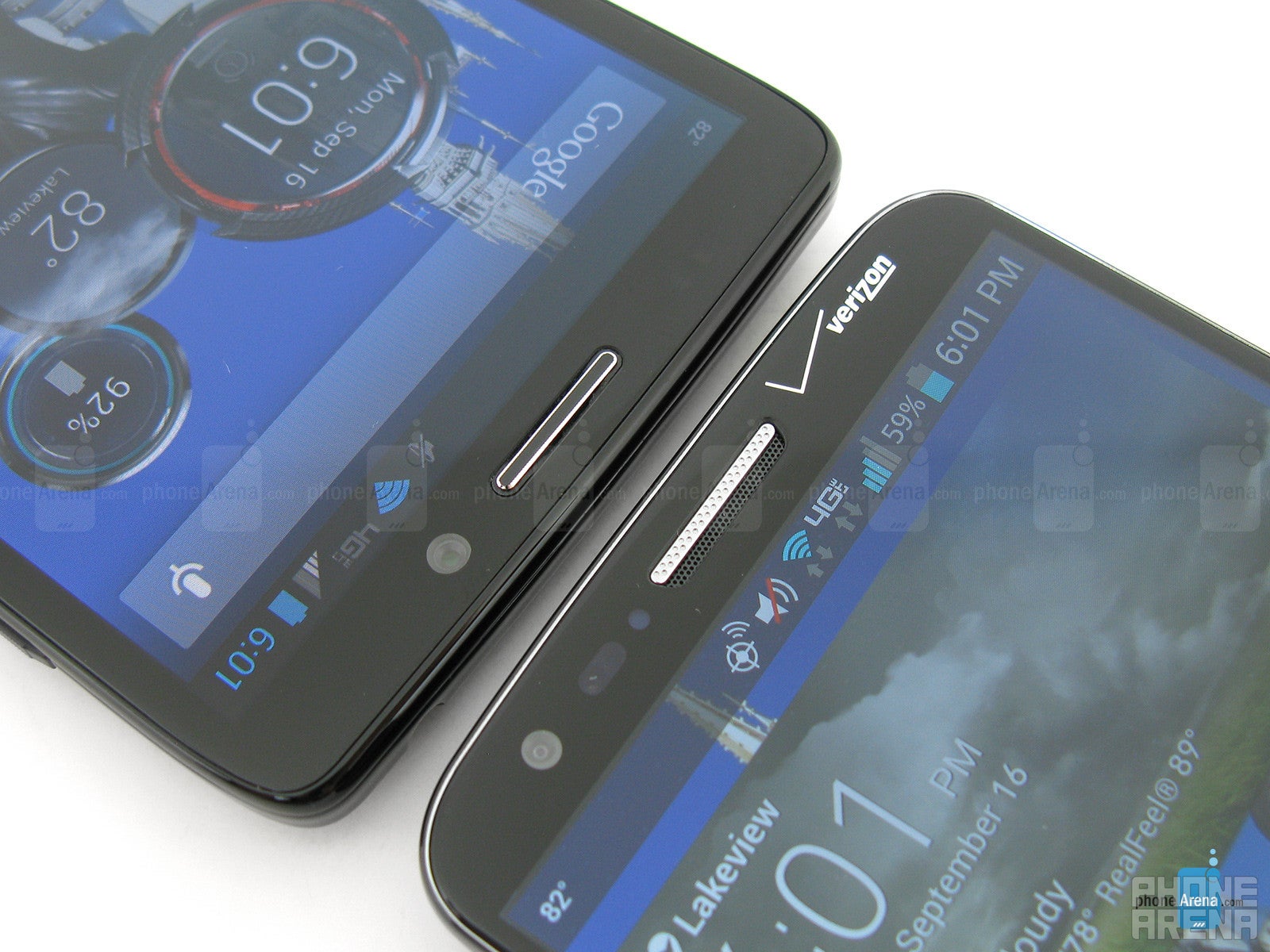
Signal reception was also slightly better on the DROID Ultra with -96dBm for voice and -99dBm for 4G LTE, while the LG G2 was -100dBm for voice and -104dBm for 4G LTE.
Battery
When it comes to battery capacity, the Motorola DROID Ultra comes equipped with a 2130mAh internal battery, while the LG G2 has a larger capacity 3000mAh battery. While testing the continuous talk time, the DROID Ultra lasted for 13 hours straight, but the LG G2 surpassed it at 16 hours of talk time, though the king is still the DROID MAXX at 20 hours of talk time. For standard mixed daily usage, the DROID Ultra will provide about 1.5 days of use, with the LG G2 pushing closer to 2 days.
Conclusion
With both the Motorola DROID Ultra and LG G2 coming in at the same $200 price with a 2-year contract; it is a tough choice between the two. The fact is, neither phone is far superior to the other – as each has its strong points and short comings.
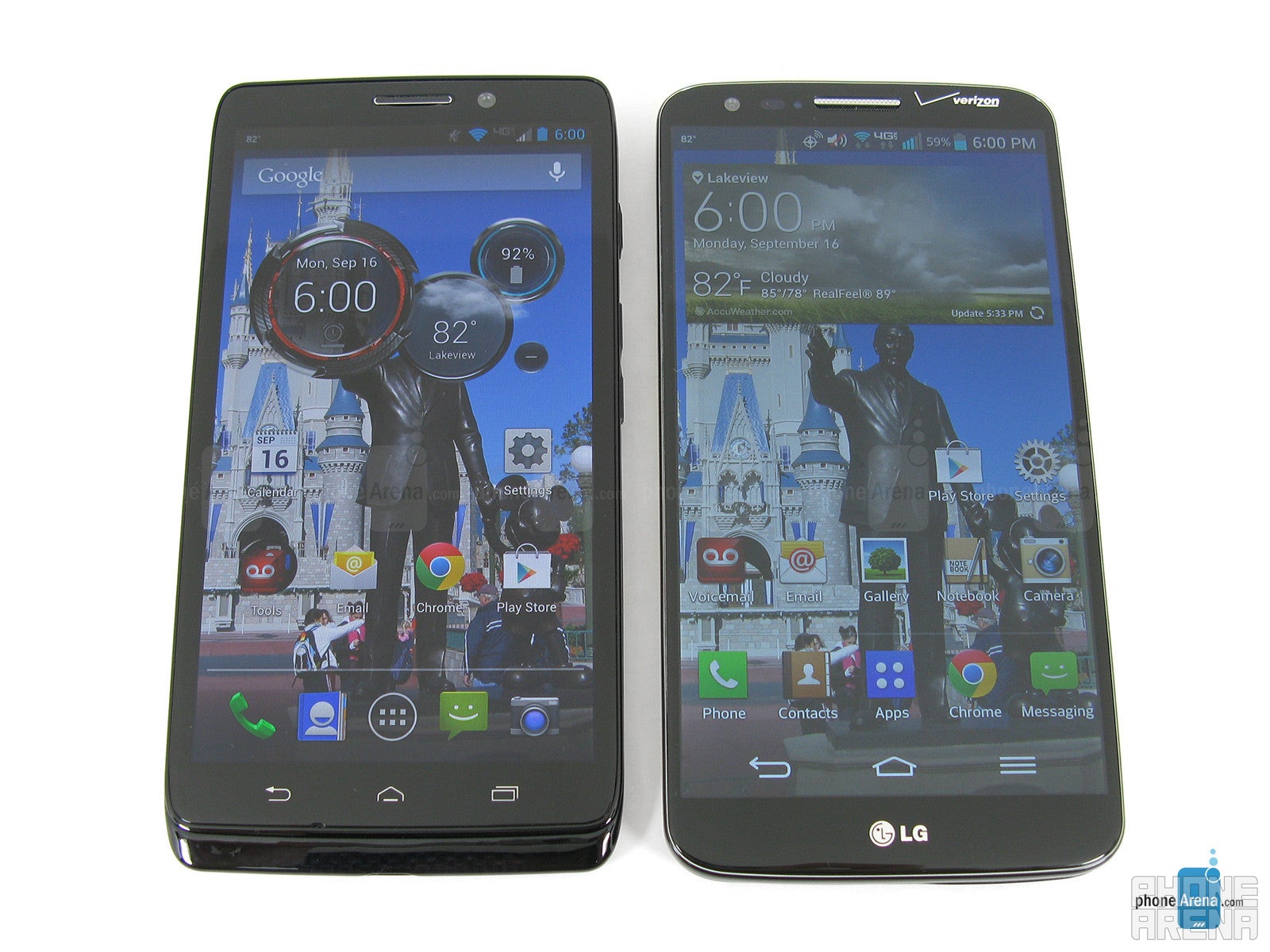
What we love about the LG G2 is the larger 5.2” 1080p HD display, since it looks more detailed and colors are more accurate. Also, the camera does well capturing images and the videos can be recorded at 60fps, not to mention the optical image stabilizer. The device also feels a bit faster with the Snapdragon 800 processor, has twice the internal storage capacity, and has a larger battery. But call quality is only average, and we’re not fond of the rear placement of the power and volume keys, as they are hard to distinguish from one another by touch alone. But with the user interface, LG does allow more customization with its skin layered over Android.
For the money, we believe most bang-for-your-buck right now is the LG G2, based on specs and daily usage, as it offers a more top-tier user experience. Though the Motorola DROID Ultra is no slouch, it just doesn’t measure up to the LG G2 at the same price.

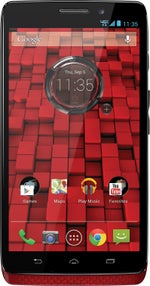
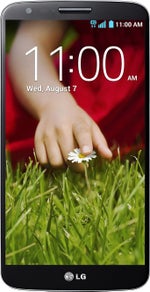


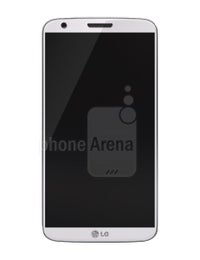
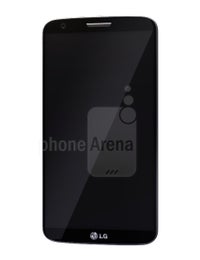
















Things that are NOT allowed: